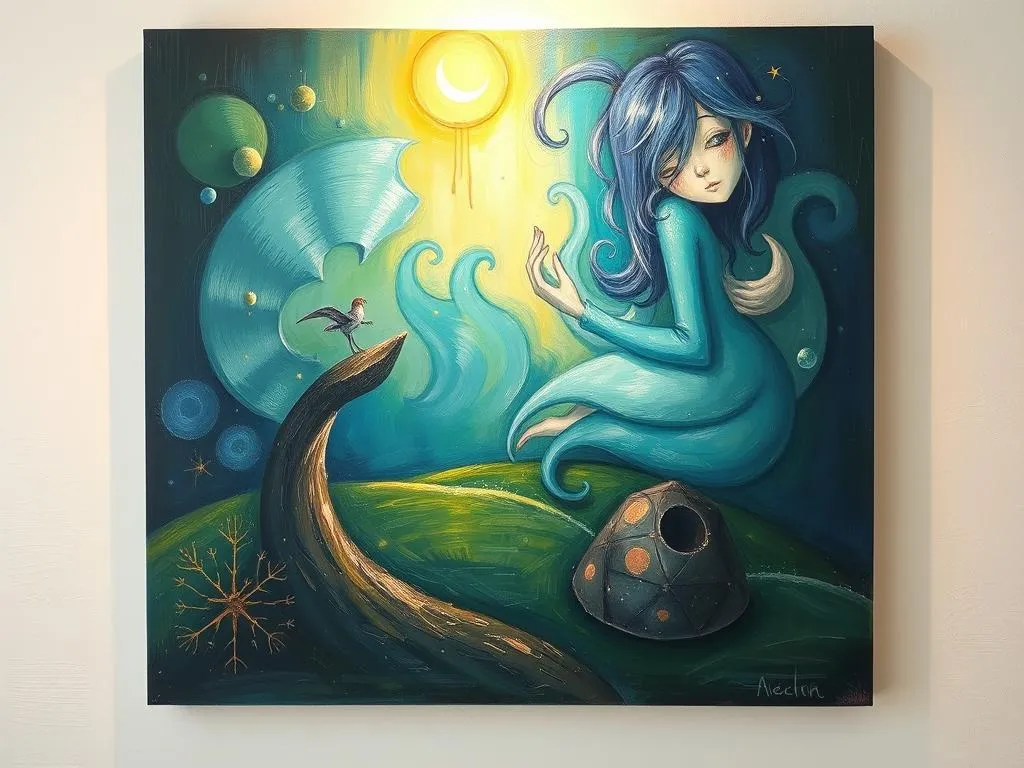
Have you ever woken up from a dream and felt a nagging curiosity about the environment you found yourself in? Dreams can transport us to surreal landscapes, bustling cities, or serene forests, each setting bearing a unique significance. The environments we inhabit in our dreams are not just backdrops; they are rich with symbolism, reflecting our emotions, fears, and aspirations. Exploring these dream settings can provide profound insights into our waking lives, allowing us to understand ourselves better.
Whether you dreamed of wandering through an endless maze, standing atop a towering mountain, or finding yourself in a familiar yet distorted version of your childhood home, each location has its own story to tell. In this article, we will delve into the symbolic meanings of various dream settings, analyze experiences tied to these environments, and uncover how they can lead to personal growth and transformation. Let’s embark on this enlightening journey together!
Dreamscapes: The Symbolism of Settings
When it comes to dream interpretation, the settings are often the keys that unlock deeper meanings. Each location symbolizes something unique—its characteristics can reveal hidden aspects of your psyche and life situation. Here are some common dream environments and their meanings:
-
Familiar Places: Dreams set in familiar environments, like your childhood home or school, often reflect feelings of nostalgia or unresolved issues from your past. These spaces can signify a desire to revisit old memories or confront lingering emotions.
-
Nature: Dreaming of natural settings—be it a serene forest, a vast ocean, or a majestic mountain—often symbolizes a connection to your inner self. Nature in dreams can represent tranquility, growth, and the instinctive rhythms of life. Such environments might indicate a need for grounding and reflection.
-
Urban Landscapes: Cities and urban settings can signify the hustle and bustle of everyday life. They may represent ambition, social interactions, or feelings of being overwhelmed. If you find yourself lost in a crowded city, it may reflect your anxieties about navigating social dynamics or your career.
-
Dark or Abandoned Spaces: Dreaming of dark, abandoned buildings or deserted landscapes can evoke feelings of fear or uncertainty. These settings often symbolize the unknown or aspects of your life that you may be neglecting. They invite you to confront your fears and explore your shadow self.
-
Fantasy Worlds: Environments that defy the laws of nature—such as floating islands or magical realms—can represent your creativity and imagination. These dream settings may embody your innate desire for adventure and exploration, reflecting a longing to escape the mundane.
Understanding these symbols can help you decode the messages your subconscious is trying to convey. Every dream setting is an invitation to explore your emotional landscape, revealing the intricate connections between your experiences and your psyche.
Dream Journeys: Personal Experiences and Scenarios
Let’s take a closer look at how different dream settings can manifest in various scenarios. Each situation highlights the unique emotions and themes associated with different environments:
1. The Endless Maze
Imagine wandering through an endless maze, with walls that seem to close in. This setting may evoke feelings of confusion and frustration. You might find yourself trying to escape, only to realize that the maze symbolizes a current challenge in your life—perhaps a career decision or a complicated relationship. This dream encourages you to confront the complexities you face and to seek clarity amid the chaos.
2. The Towering Mountain
In another scenario, you find yourself climbing a towering mountain. As you ascend, the view becomes more breathtaking, but the journey is strenuous. This setting often symbolizes personal challenges and aspirations. The mountain represents your goals and the effort required to achieve them. The dream suggests that while the path may be steep, the rewards of perseverance are worth it.
3. The Childhood Home
Picture yourself back in your childhood home, but everything feels slightly off. Doors lead to unexpected rooms, and familiar objects are out of place. This setting can symbolize unresolved issues from your past that are surfacing in your waking life. It may prompt you to reflect on your upbringing and how it influences your current identity. Engaging with this dream could lead to healing and a deeper understanding of yourself.
4. The Abandoned School
You find yourself wandering through an abandoned school, filled with dusty hallways and empty classrooms. This dream setting can evoke feelings of nostalgia and unease. It may symbolize feelings of inadequacy, fear of failure, or a desire to learn from past mistakes. This dream encourages you to reflect on your educational and personal growth journeys, reminding you that learning is an ongoing process, no matter your age.
5. The Floating Island
Finally, imagine discovering a floating island, vibrant with exotic plants and colorful creatures. This enchanting setting often symbolizes creativity and the exploration of your imagination. It invites you to embrace your unique ideas and aspirations, encouraging you to take risks and venture beyond your comfort zone. This dream can be a reminder that your imagination holds the keys to new possibilities.
Each of these scenarios illustrates how the environments we encounter in dreams can act as mirrors reflecting our thoughts, feelings, and experiences. By analyzing the settings and the emotions they evoke, we can gain valuable insights into our lives.
Transformative Landscapes: Embracing Personal Growth
Your dream settings are not just reflections of your current state; they are gateways to personal growth and transformation. By engaging with these environments, you can unlock valuable lessons and foster deeper self-awareness. Here are some practical insights to guide you on your journey:
-
Reflect on Your Emotions: When you wake up from a dream, take a moment to jot down your feelings. How did the setting make you feel? Emotions are powerful indicators of your subconscious state, and recognizing them can help you process underlying issues.
-
Explore Your Past: If you frequently dream of familiar places, it may be time to reflect on your past experiences. Consider journaling about your childhood or past relationships. This exploration can lead to healing and a better understanding of how these experiences shape your present.
-
Embrace Challenges: Dreams featuring daunting landscapes, like mountains or mazes, can be reminders of the challenges you face. Instead of avoiding these feelings, embrace them. Identify the obstacles in your waking life and devise a plan to tackle them head-on.
-
Nurture Your Creativity: If you find yourself in whimsical or fantastical dream settings, take this as a sign to nurture your creative side. Engage in artistic pursuits or explore new hobbies that excite your imagination. Allowing yourself to create can be liberating and fulfilling.
-
Practice Mindfulness: When you encounter dark or abandoned spaces in your dreams, use these moments as opportunities for self-reflection. Consider practicing mindfulness techniques to confront your fears and anxieties. Acknowledging your feelings can lead to personal growth and empowerment.
By actively engaging with your dream settings, you can transform them into tools for personal development. Each dream is an opportunity to learn more about yourself and navigate the complexities of life.
In conclusion, the settings we encounter in our dreams are more than mere landscapes; they are rich tapestries woven with our emotions, experiences, and aspirations. By exploring these environments through symbolism, personal scenarios, and practical insights, we can uncover profound truths about ourselves. Remember, your dreams are not random; they are a language of the subconscious, urging you to listen and learn.
As you drift off to sleep tonight, consider this: What stories do your dreams hold? The next time you find yourself in a dream setting, take a moment to reflect on its significance. Each environment is a stepping stone toward understanding your inner self and embracing the journey of personal growth.







